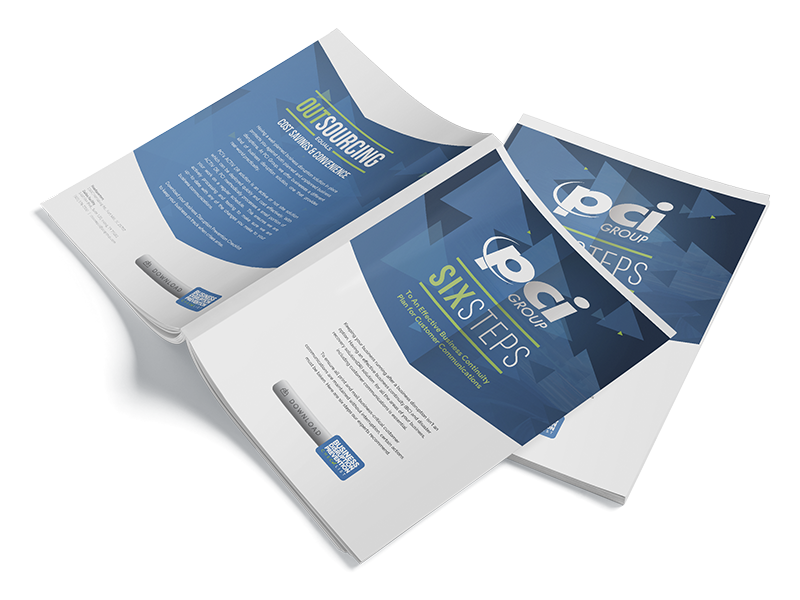
Questions to Ask About How You’ll Continue Print & Mail Operations
Feel confident in your print and mail business continuity plan? Most businesses have a plan, but that doesn’t mean it’s an effective one. And having one that is formalized isn’t a given. A recent survey found that 40% of companies do not have a documented plan. Even those that do, won’t survive unscathed, as 33% of organizations say they were still woefully unprepared when a disaster actually struck. Those are some eye-opening stats. And with business disruption, you aren’t just trying to protect your operations from one kind of threat. There could be numerous ones including weather, hackers, hardware failure, and more. If you want to increase your confidence in your company’s plan and avoid losses, we’re sharing some critical questions you need to be asking.
What does downtime cost you?
If you want to understand what impact disasters have on functions, you’ll want to quantify it. Do this by first discerning how delays impact your billing cycle. Then add in costs you still have to pay even though operations are down.
Let’s say, every hour, your in-plant produces x number of printed and mailed pieces. If these are bills, then each piece has a number assigned to it. It’s a tight window to get invoices out to your customers. In fact, you may be legally obligated to present bills a certain amount of days before they are due. If your production is down even a few hours, it could negatively impact your numbers.
Then, there’s all the fixed costs that keep being paid: internal labor, equipment, and every other cost of total ownership of your in-plant. It’s everything from the paper to security to utilities. Boil it down to what it costs per hour to run your in-plant.
When you have this final number, you’ll be able to determine the maximum amount of time you can be down without serious implications for cash flow. This can help you negotiate the most beneficial service level agreement (SLA) with your business continuity print vendor.
What equipment capabilities does your vendor have?
Your in-plant may have specific features that you appreciate, like address scrubbing or tracking of mailings. Because these tools are helpful in efficiency, accuracy, and compliance, they would be things you’d expect your vendor to have.
Not all print and mail disaster recovery providers have these capabilities. While your operations many continue shortly after a disaster, it’s not the same. Maybe, it won’t impact your quality. However, there’s a good chance it will. Most print vendors guarantee a 99.6% rate of accuracy, which sounds great. Upon closer examination, it might not be the type of quality you expect. If a run is eight million, then that’s 32,000 that have some kind of error. The error could be a wrong address because they don’t have the ability to scrub addresses with the U.S. Postal Service Intelligent Mail Barcode (IMB). There are a number of other possible errors, which could put you in a position of noncompliance. Further, if they don’t have tracking capabilities, the data of where and when your mailings were completed won’t be available.
If you’re going to work with a third-party firm, make sure their capabilities match or exceed yours. This can save you a lot of frustration should a disaster actually occur.
What kind of events are you prepared for?
Much of the time in business continuity print planning, the focus is on large-scale events like severe weather. But you might be overlooking the small things that could happen every day to shut your in-plant down. You’re, of course, more likely to be up against the mundane than the supernatural. You could lose power for an hour. Your equipment could break down or need routine maintenance. Internal errors by employees might even be a culprit.
Don’t plan only for the cataclysmic events. Plan for the everyday emergency. Be prepared for anything. Make sure your disaster recovery vendor does, too. Consider things like their capacity. Can they quickly switch to printing your statements and documents in minutes? Or, does it require moving other pieces offline to get your system online?
Does your business continuity print plan protect your reputation?
Protecting your reputation may not be in your plan, but it should be. If you can’t get critical communications to your customers, you’re likely to get inundated with complaints. Frustrated customers will begin to trust you less and could even end the relationship.
Your reputation could be on the line. By ensuring your company’s continuity in the face of a disaster, there should be minimal downtime, if any. As a precaution, your customer service department should receive communications about possible delays, so they are armed with information if calls begin.
Your reputation is one of the most important parts of your brand. Don’t let it get tarnished with an incomplete business continuity plan. Be ready to keep serving customers, so that they’d never even know you faced such a situation.
Keeping your business functioning is one of the most important services PCI Group offers. We know how to help clients survive a disaster and recover with little to no downtime. As you can see, what you don’t know can really hurt you. But now you know, so it’s a good time to check the pulse of your print and mail business continuity plan.


